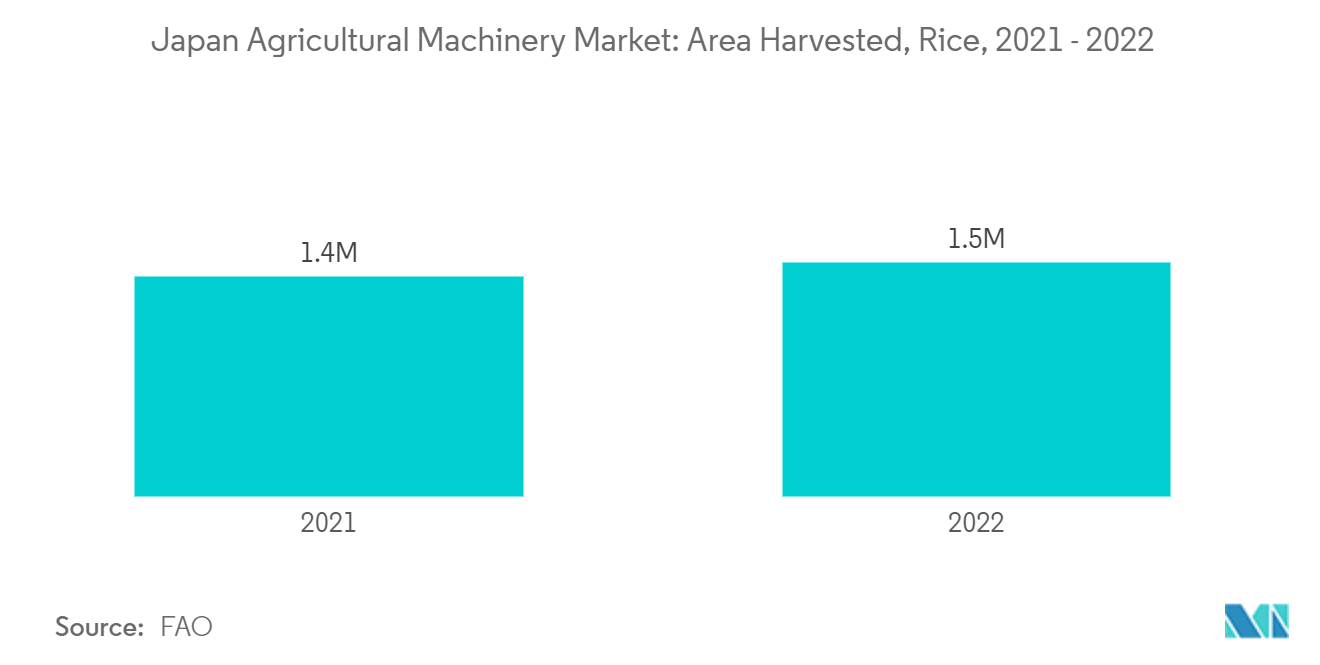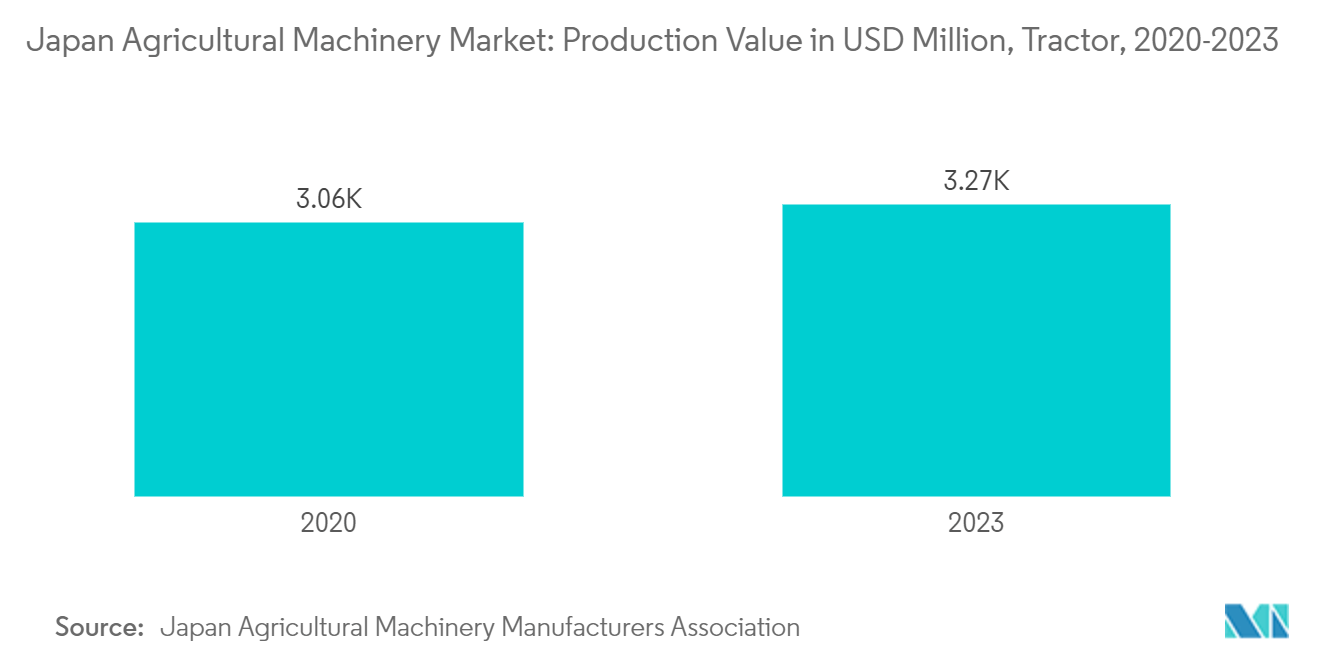Market Trends of Japan Agricultural Machinery Industry
The Need to Increase Farm Productivity Triggers the Demand
Japan's agriculture sector contributes a mere 1.4% to its GDP, despite only 12% of its land being arable. While terraces occupy only a fraction of Japan's landscape, they yield remarkably high crop outputs. With a growing population, this trend raises concerns about potential food scarcity. Given the constraints of Japan's agricultural land, meeting the nation's food demands poses a significant challenge. For example, rice yield slipped from 74,967 Kg per hectare to 69,208 Kg per hectare in 2022, underscoring the pressing need to boost farm yield and productivity. Embracing mechanization, especially with cutting-edge precision agriculture technology, can optimize land use and enhance production.
Moreover, the use of versatile agricultural machinery, including rotavators, cultivators, power tillers, and combine harvesters, has led to a notable reduction in labor dependency. Data from Japanese Government Statistics reveals that employment in the agriculture sector stood at 57 thousand in 2021, marking a 3% decline from the previous year. This dwindling agricultural labor force underscores the growing reliance on machinery in the nation's farming practices. In addition, agricultural equipment designed to minimize wastage plays a pivotal role in achieving self-sufficiency. For instance, combine harvesters: they not only curtail grain wastage during harvesting but also bolster the nation's ability to meet its food demands. Thus, the heightened adoption of such machinery not only boosts productivity but also curtails crop wastage.

Rise in the Number of Tractors
Farmers predominantly rely on tractors as a primary piece of farm machinery. In Japan, the adoption of tractors is outpacing that of other agricultural machinery. According to the Japan Agricultural Machinery Manufacturers Association, the total production value of agricultural machinery in 2023 reached USD 3,269.68 million, with tractors accounting for a significant 52% of this valuation. Moreover, in 2023, tractor production in the country reached 113,847 units.
While production and purchases of tractors have displayed strong potential during the study period, this was largely attributed to the several key factors that have driven the surge in tractor sales including labor shortages, rising labor costs, supportive government policies, accessible credit facilities, and an overarching goal to boost agricultural productivity. Furthermore, rice stands out as Japan's premier crop, consistently representing about 47% of the nation's annual agricultural output value. Given rice's status as the country's most mechanized crop, there's a pronounced reliance on agricultural equipment, particularly tractors, for primary cultivation tasks.
Moreover, as they enhance farming efficiency, driverless tractors are poised to become increasingly popular in the coming years. In a bid to cut down rice production costs, the Ministry of Agriculture, Forestry, and Fisheries in Japan is spearheading the development of technologies such as autonomous tractors. Consequently, with government backing bolstering the push for driverless tractors, sales of these tractors are set to rise during the forecast period.


